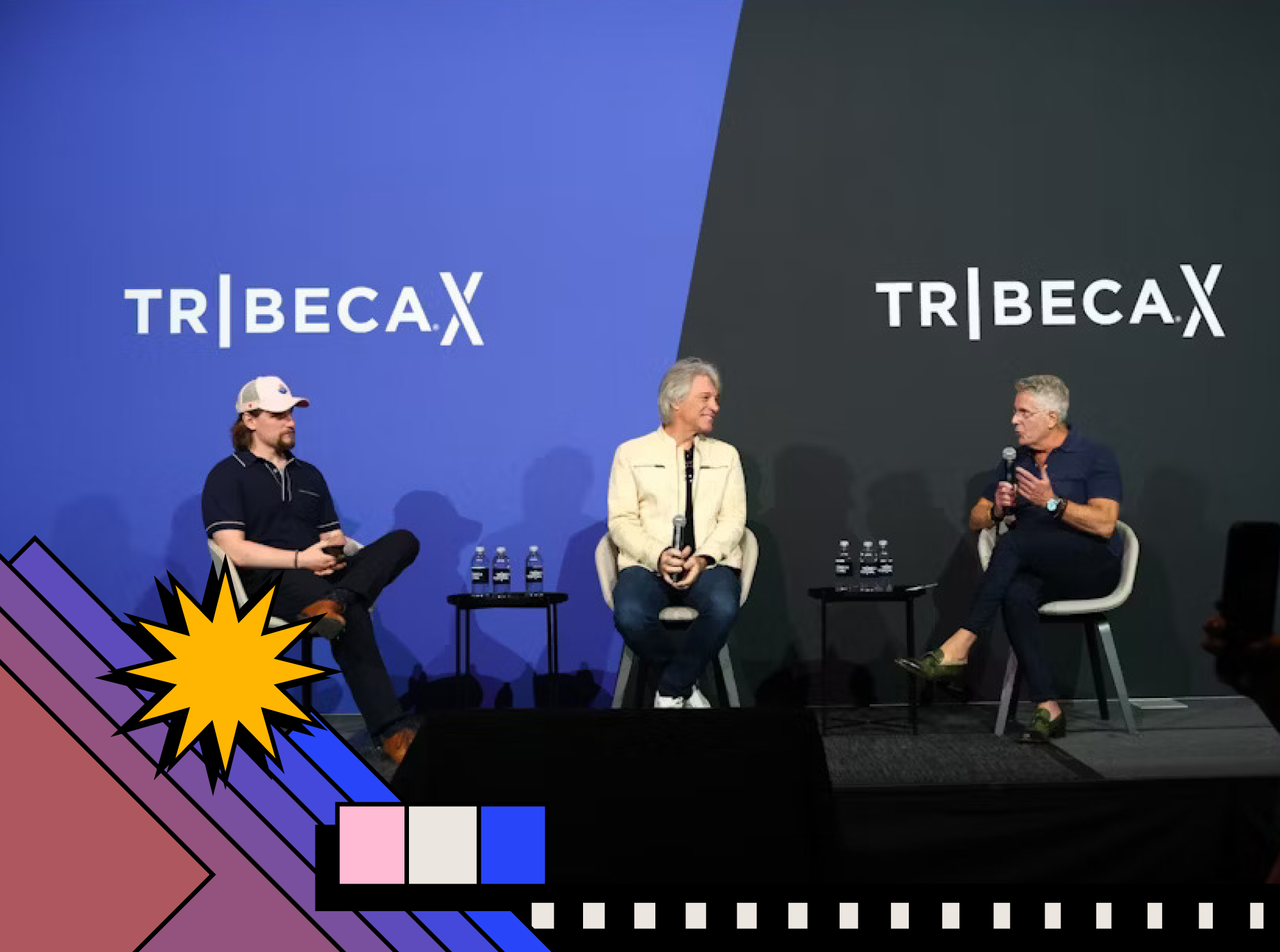TRIBECA RETURNS
In 2002, Robert De Niro and Jane Rosenthal founded the Tribeca Film Festival in the aftermath of the World Trade Center terrorist attack. For 20 years, the festival has revitalized New York City, arguably establishing it as a major filmmaking center and hub, reaching the broadest possible audience through the power of cinema. After a year in which film festivals left the theaters and morphed into a virtual affair, Tribeca is once again a trailblazer; this time as the first major North-American film festival to bring audiences back together for an in-person experience. With its return, the festival presented significant changes to the format, layout and programming that represent a larger shift within the industry as a whole, a shift we expect to see duplicated in the coming months at other festivals. Here are our top three takeaways…
DROP THE FILM – ADD THE WORKS
In a surprising move, Tribeca has rebranded itself for its 20th birthday. The Tribeca Film Festival as it was once named, has dropped the ‘film’ from its appellation to become the Tribeca Festival. In addition to its new title, the festival introduced an exciting TV lineup to its honored programming and expanded its longtime sidebars devoted to gaming and V.R. Not only did these changes result in record high number of submissions, but also foreshadow trends to come in the festival world.
Movies are what made Tribeca memorable, but in an ever-morphing, post-pandemic, media landscape, movies are one drop in a bucket of content audiences are consuming. The rebranding of Tribeca as more than just a film festival, but rather a culmination of creative work is reflective of how the media landscape realistically exists. As the major festivals return to the market, we expect to see more of this inclusivity for television, a big win for series fans! As De Niro said himself in the festival’s opening press conference, “We just want them to come back downtown…” and downtown is certainly where we went.
THE FUTURE OF HYBRID FESTIVAL
The way the industry pivoted to a virtual landscape in a time of uncertainty and limitation should and will be talked about for decades to come. As mentioned in previous takeaways for the fully virtual Sundance Film Festival and SXSW Online 2021, the unbridled access to content was welcomed and appreciated. Having an on-demand festival model not only benefited the festival goers but also the filmmakers and creators showcasing their work. More eyes, more exposure, more success.
Although well-founded, the yearning for in-person experiences, specifically the return to the traditional film festival format, was always going to be a regressive action. Tribeca did well to introduce a hybrid model at the time that it did, and will be the standard for many festivals to come. At least, it should, otherwise future festivals be limited in both capacity and potential. The ability to view the selections online proved beneficial for those who missed the chance to grab tickets to the outdoor screenings, an unmatched value considering it offered previews to high demand films including In The Heights, Roaring 20s, and LFG before their inevitable theatre release or streaming debut.
Despite the evidence left behind in the wake of a widespread contagion, examples not limited to specified pods for contact tracing, social distanced seating, and mandatory masks, Tribeca was able to successfully capture the essence of a pre-pandemic world with their outdoor screenings, talks, and concerts. What will be interesting to see is how festivals innovate not just this year, but into 2022 and beyond. Will the hybrid model prevail once the need for precaution dies and COVID-19 is virtually eradicated? Based on its success and ease of application, we think yes.
NARRATIVE HAS EXPANDED
Tribeca first introduced video games to their festival selection in 2011, to much surprise from industry voices. One could say that the inclusion of video games in a film festival would reflect a misunderstanding of its purpose, mistakenly pushing gaming narratives towards more of an interactive film perspective. However, when pondering on the progression of games over the last decade, both in graphics and story, it becomes clear that Tribeca’s vision for where video games could fit within the film world naturally bridged the gap between mediums that were already on course for collision.
For the first time in Tribeca’s 20-year history, the official selection included a full slate of video games, complete with virtual demos for each and a juried award decided by both video game experts, as well as heavy hitter film names. The move emphasizes the change within media itself, how denominations such as episodic series, immersive storytelling, and video games coexist with film instead of alongside it. Telling captivating, even chilling, stories such as in the suffocating ‘Twelve Minutes’, does not need to stay within the confines of a movie screen.
‘Twelve Minutes’ featuring Willem Dafoe, James McAvoy, and Daisey Ridley tells the chilling story of a man stuck in a time loop during a violent home invasion, where the user controls the outcome. The game narrative opens a new level of storytelling that traditional narrative mediums cannot access. In the case of Twelve Minutes, the user acquires knowledge during each loop, discovering new sides and secrets to their character, thus discovering new possibilities for their character’s story and the two others in the game.
In a traditional narrative form, despite endless possibilities for a story, what ends up on the screen becomes finite in its telling. In many cases, for both Twelve Minutes and narrative based games in general, the possibilities are virtually endless, creating multiple stories within one timeline or multiple, emulating life as we know it; What better way for a creative to tell a story than to tell it true to life? Narrative elements to video games have always been at the forefront of a game’s success, but when viewed through the lens of a festival, within a festival space, it leaves the visceral impression of an art form growing in several directions at once. While interactive films have yet to find its stride, video games have started on the path to joining film and television in the ranks of mainstream relevancy, a path paved by Tribeca.




